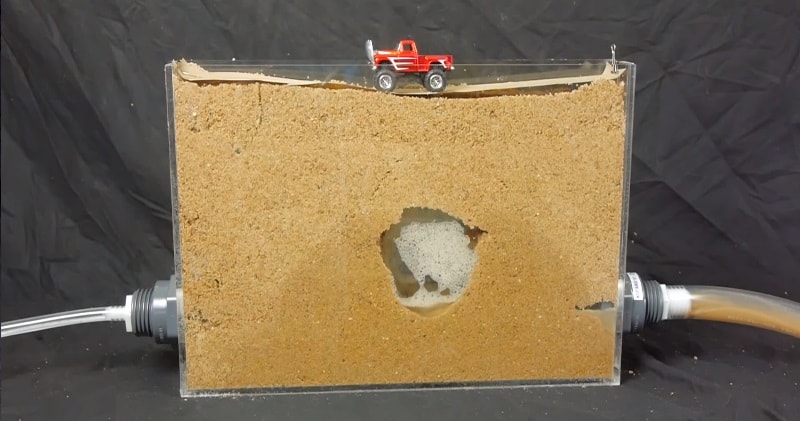Sinkholes form through both natural and human-made processes. Most of us think about erosion on the surface of the earth, but erosion can occur in the subsurface as well.In fact, scientist and engineers have a very creative name for just such a process: internal erosion. If just the right factors come together in the subsurface, some very interesting things can occur, including sinkholes.
image/text credit: Practical Engineering
Sinkholes mainly occur in what is known as ‘karst terrain’; areas of land where soluble bedrock (such as limestone or gypsum) can be dissolved by water. With cover-subsidence sinkholes the bedrock becomes exposed and is gradually worn down over time, with the holes often becoming ponds as the water fills them in.
With a cover-collapse sinkhole this same process occurs out of sight.Naturally occurring cracks and small voids underneath the surface are hollowed out by water erosion, with a cover of soil or sediment remaining over the top. Eventually, as the hole expands this cover can no longer support its own weight and suddenly collapses to reveal the cavern underneath.
Advertisement
Most of the sinkholes we are seeing at the moment are at least indirectly created by human activity. They’re occuring just to the sides of human constructions where rain water has been concentrated on a particular patch of ground in the form of run-off from roofs and tarmac.











